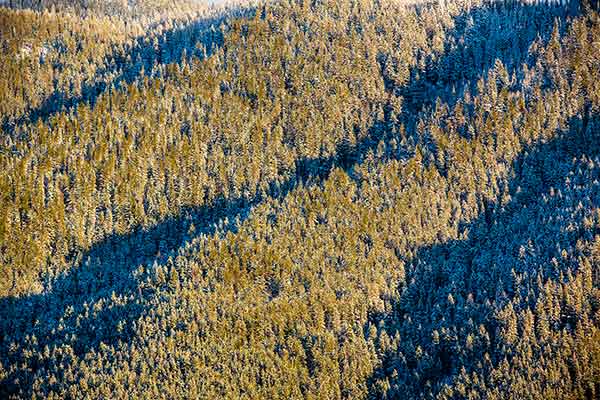Last updated: December 30, 2020
Lesson Plan
Mature Forest Mime

- Grade Level:
- Upper Elementary: Third Grade through Fifth Grade
- Subject:
- Literacy and Language Arts,Science
- Lesson Duration:
- 60 Minutes
- Common Core Standards:
- 3.RI.4, 4.RI.4, 5.RI.4
Essential Question
What are the different components of a mature forest?
Objective
Students will be able to interpret and identify ecological concepts related to a forest, through use of a pantomime by the end of the lesson.
Preparation
- Vocabulary list with definitions
- Small pieces of paper with vocabulary words printed on them
- Non transparent container to hold pieces of paper
Procedure
1. Give students handouts with words and definitions on them. Discuss and encourage students to give examples of definitions. See recommended list of words and definitions below in the vocabulary section.
2. List all the words on small pieces of paper and put them in a container.
3. Divide the class into groups of four. Each group draws one word from the container, looks up the definition using the handout, and decides how to pantomime that word. Allow about five minutes for the groups to prepare their mimes.
4. Groups of students then take turns miming their word to the class. Set a time limit of one minute per group.
5. The rest of the class may use the handouts as a guideline for guessing the word being mimed.
6. Groups gain one point for a successful miming (having their word guessed within the one-minute time limit) and one point for guessing another group’s mime correctly.
7. Continue drawing words as time permits, changing groups or having “star mimers” assist students who muddled their mimes.
Variations and Extensions:
1. Go outside for this activity. An outdoor environment is conducive to learning ecological concepts and noise level less a problem.
2. Define words together in class orally. List words and definitions on chalkboard. This encourages students to think and remember. Leave definitions on board, or erase, challenging the students and encouraging memory retention.
Vocabulary
Bacteria: typically a one-celled microorganism which multiplies by division, has no chlorophyll, and can be seen only with a microscope.
Canopy: the leaf and branch layer of the tallest trees that forms a roof over the forest community.
Decomposition: the break up into simple parts; from a dead tree to soil.
Ecosystem: a community of living things interacting with each other and with the physical environment. Major types of ecosystems include aquatic (pond, creek, lake, ocean) and terrestrial (grassland, forest, desert).
Environment: the surroundings of a plant or animal including other plants and animals, climate, and location.
Food Chain: the transfer of food energy from the source in plants through a series of animals, with repeated eating and being eaten. For example, a pine tree, a red squirrel, and a pine marten would form a simple food chain.
Food Web: the interconnection of the food chains in a community. A food web shows how members of the community are connected to other members by what they eat.
Fungus: a group of plants including mildews, molds, mushrooms, that have no leaves, flowers or chlorophyll, and reproduce by means of spores.
Habitat: the arrangement of food, water, shelter and space suitable to an organism’s needs.
Invertebrate: an animal without a backbone: bacteria, insects, spiders.
Lichen: alga and fungus growing together in a symbiotic relationship.
Microorganism: an organism microscopic in size, observable only through a microscope.
Predator: an animal which kills and eats other animals.
Prey: animals that are killed and eaten by other animals.
Sapling: a young tree.
Snag: a standing dead tree from which most of the leaves and branches have fallen.
Succession: the orderly, gradual, and continuous replacement of one plant or animal by another.
Understory: the layer formed by the crowns of smaller trees in a forest.
Vertebrate: an animal having a backbone, or spinal column: fish, amphibians, reptiles, birds, and mammals.
Yeast: a mass of minute fungi.
Assessment Materials
Ask students to choose one of the vocabulary words and draw a picture of its meaning.
